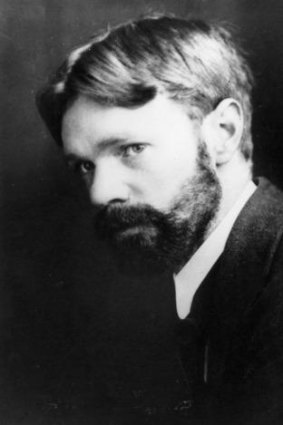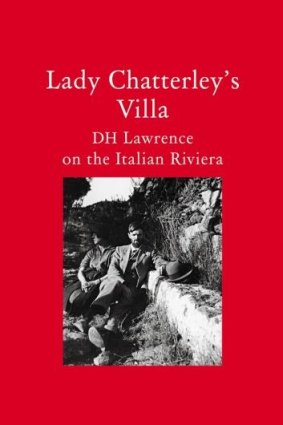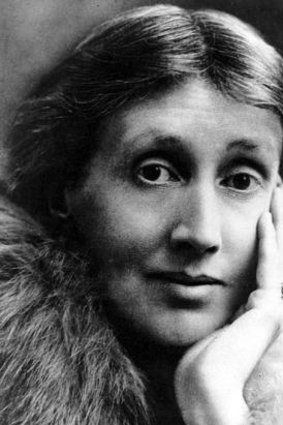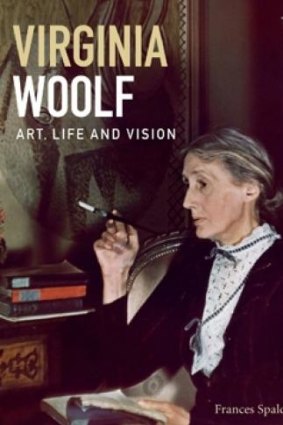This was published 9 years ago
Reviews: Lady Chatterley's Villa; Virginia Woolf - Art, Life and Vision
By Colin Steele
LADY CHATTERLEY'S VILLA: D. H. LAWRENCE ON THE ITALIAN RIVIERA.
By Richard Owen.
Armchair Traveller. $34.95.
VIRGINIA WOOLF: ART, LIFE AND VISION.
By Frances Spalding.
National Portrait Gallery, London. $45.

Inspired by real affairs: Writer and poet D. H. Lawrence (1885-1930).Credit: Hulton Archive/Getty Images
Was Lady Chatterley Italian? Richard Owen, mining the unpublished letters and diaries of Rina Secker, the Anglo-Italian wife of D. H. Lawrence's publisher, establishes a strong case in Lady Chatterley's Villa.

Lady Chatterley's Villa: D.H. Lawrence on the Italian Riviera, by Richard Owen.
Owen says, "Lawrence was very perceptive and used people he met all the time in his fiction. There is no evidence that he used Rina for the sex scenes in Lady Chatterley but her character contributed to it." Lawrence's German wife, Frieda once proclaimed at a London party after Lawrence's death,"Rrrina my dear, Lady Chatterley is you."
Lawrence wrote Lady Chatterley's Lover in 1926, having previously written two short stories, Sun and The Virgin and the Gypsy also inspired by Rina. Although suffering from an anxiety syndrome, Rina was, according to Owen, "vibrant, observant, mischievous, flirtatious and coquettishly aware of her charms".
In Lady Chatterley's Villa, Owen details Lawrence's passion for Italy, particularly its culture, its food and its weather, before honing in on the six months Lawrence and Frieda spent at the Villa Bernarda, which Rina found for them in Spotorno on the Italian Riviera in November 1925.
Owen notes Lawrence also drew Chatterley source material from his wife's affair with the villa's landlord, the dashing Italian army captain Angelo Ravagli, whose "devil-may-care machismo" would ultimately lead to his becoming Frieda's third husband after Lawrence's death in 1930.

Tortured soul: Writer and feminist Virginia Woolf (1882-1941).
Rina's son Adrian recalls, "Rina had an impact on Lawrence quite apart from her role in installing the Lawrences with the Ravaglis – with the outcome we all know." Lawrence died in Venice, on March 2, 1930. It was fitting of his love for Italy that, just before he died, he wrote: "In the sunshine, even death is sunny."
Virginia Woolf (1882–1941) wrote in October 1932, "I am reading DHL with the usual sense of frustration. Not that he & I have too much in common – the same pressure to be ourselves." With James Joyce, Lawrence and Woolf were the literary heavyweights of the period.

Virginia Woolf: Art, Life and Vision, by Frances Spalding.
Professor Hilary Spalding's Virginia Woolf: Art, Life and Vision accompanies her National Portrait Gallery, London, exhibition on Woolf, which finished at the end of October. Spalding creates an excellent visual and textual framework to explore not only Woolf's writing and literary circles, but also her feminism, her love affairs and the recurrent depressions which led to her suicide in 1941.
The NPG exhibition would have pleased Woolf. When her father was a trustee of the gallery, she once refused to sit for a drawing because she assumed it would never be displayed and was critical of the overwhelming dominance of the male portraits in the gallery.
Spalding says of Woolf, "all kinds of lenses have been placed over her work to show one thing or another." The numerous colour and black-and-white illustrations provide a comprehensive lens through which to view Woolf, her family and friends, especially the Bloomsbury group. Archival material reproduced includes covers of first editions of Woolf's novels and letters from Virginia, concluding with the content of the haunting letter from Virginia to Vanessa Bell, written shortly before Woolf's suicide.
Woolf once said, "Words are an impure medium … better far to have been born into the silent kingdom of paint." But Spalding's lucid and beautifully illustrated book demonstrates how writing and painting were willing companions in Woolf's world.